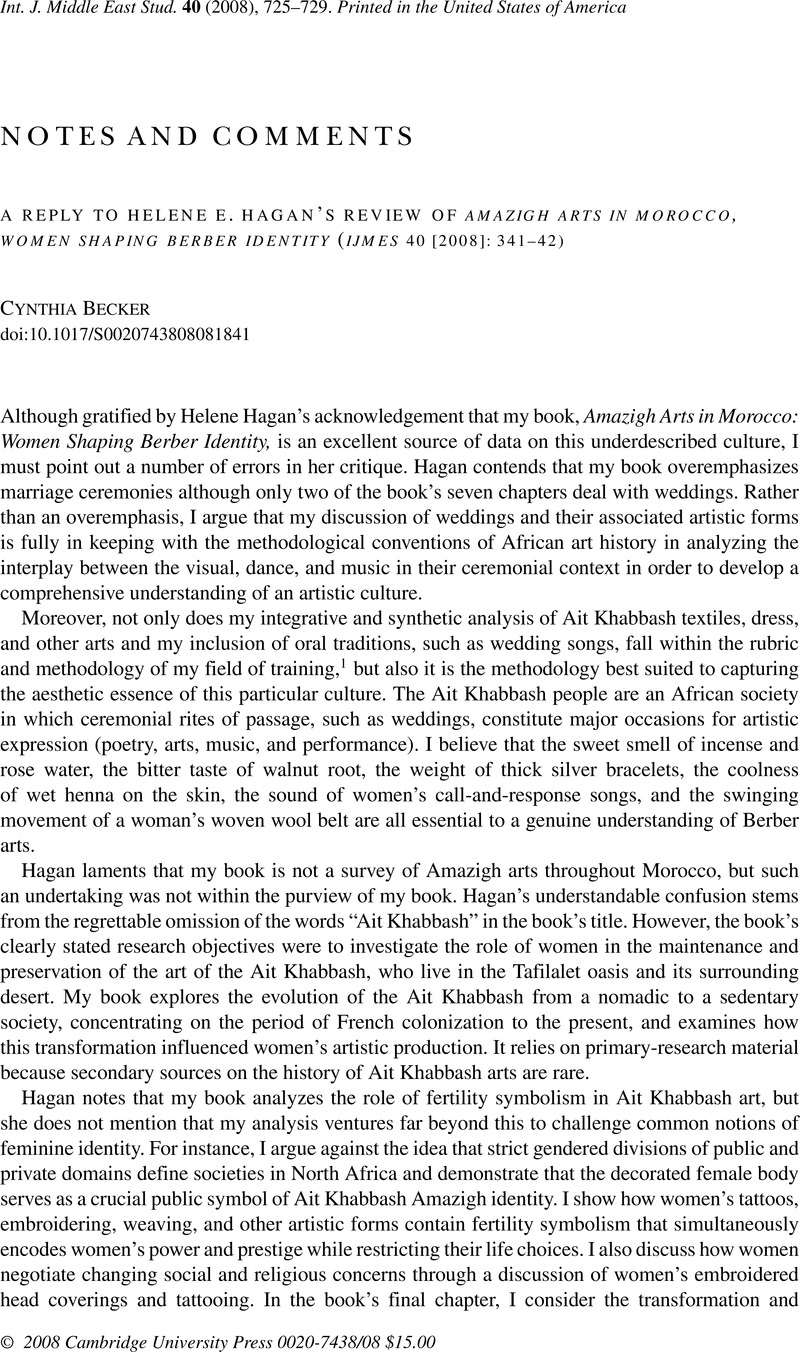No CrossRef data available.
Article contents
A REPLY TO HELENE E. HAGAN'S REVIEW OF AMAZIGH ARTS IN MOROCCO, WOMEN SHAPING BERBER IDENTITY (IJMES 40 [2008]: 341–42)
Published online by Cambridge University Press: 01 November 2008
Abstract

- Type
- Notes and Comments
- Information
- Copyright
- Copyright © Cambridge University Press 2008
References
NOTES
1 Donald Clay Johnson and Helen Bradley Foster, eds., Dress Sense: Emotional and Sensory Experiences of the Body and Clothes (Oxford: Berg, 2007). This book, written to honor the renowned scholar of African textiles and dress Joanne Eicher, advocates a multisensory approach to textile scholarship. See also Henry Drewal, “Senses in Understandings of Art,” African Arts 38 (2005): 1, 4, 6, 88, 96.
2 Sidney Kasfir, “One Tribe, One Style?: Paradigms in the Historiography of African Art,” History in Africa 11 (1984): 172.
3 Cynthia Becker, Amazigh Arts in Morocco: Women Shaping Berber Identity (Austin, Tex.: University of Texas Press, 2006), 12.
4 Ibid., 20.
5 See Ross Dunn, Resistance in the Desert (Madison, Wisc.: University of Wisconsin Press, 1977).
6 Hsain Ilahian, “Small-Scale Irrigation in a Multiethnic Oasis Environment: The Case of Zaouit Amelkis Village, Southeastern Morocco,” Journal of Political Economy 3 (1996): 95. See also Hsain Ilahian, Ethnicities, Community Making, and Agrarian Change: The Political Ecology of a Moroccan Oasis (Lanham, Md.: University Press of America, 2004).
7 Ibid., 95. Please refer to my article on this topic: Cynthia Becker, “‘We Are Real Slaves, Real Ismkhan’: Memories of the Trans-Saharan Slave Trade in the Tafilalet Oasis of South-Eastern Morocco,” Journal of North African Studies 7, no. 4 (2002): 97–121.


